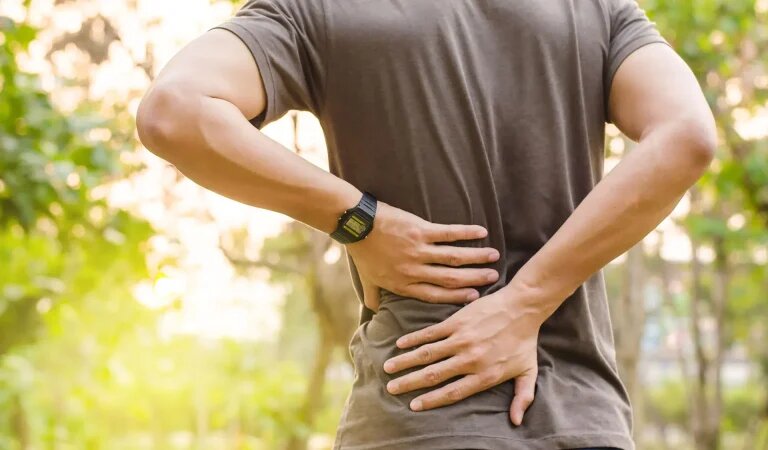Lumbar radiculopathy generally known as sciatica is a compression of the spinal nerve root originating in the lumbar vertebrae, a diagnosis of lumbar radiculopathy may sound uncommon and weird. In America, lumbar radiculopathy may affect up to 5% of people.
There are some cases when the pain becomes chronic, despite the fact that most causes of this nerve issue cure normally. when rest and at-home treatment is unable to relieve your symptoms.
SYMPTOMS OF LUMBAR RADICULOPATHY
In addition, to lower back discomfort, the following additional usual symptoms also exist :
- Pain that seems like an electric shock.
- The discomfort worsens with coughing.
- Sneezing, or standing up.
- Trembling in the muscles and inability to control one’s bowels or bladder.

WHAT ELEMENTS LEAD TO THIS CONDITION?
Lumbar radiculopathy may be caused by back trauma or varied lifestyle choices. Here is a handful of them :
- An accident or fall that results in a spinal injury.
- Improper lifting and wrong techniques.
- Prolonged sitting.
- Unhealthy behaviors such as smoking, sedentary lifestyles, poor eating, and alcohol abuse.
In addition, a number of illnesses other than overuse, injury, or poor lifestyle choices may also contribute to lumbar radiculopathy such as,
- Bone Spur
- Degeneration of the spine and normal aging, such as disc degeneration
- Pregnancy
- Diabetes
- Vertebral Stenosis
- Herniated Disc
The greatest method to completely prevent surgery is to treat back discomfort as soon as possible. Seven nonsurgical remedies are listed below.
1. Procedures involving injections
Procedures such as corticosteroid injections, nerve blocks, nerve ablations, and others may be effective in reducing pain when the site of nerve compression is identified. They are also helpful when attempting to identify the source of the pain.
2. Physical activity
Exercise under the guidance of a physical therapist is the major goal of conservative back pain treatment. Strengthening the muscles that support your spine and improving movement mechanics can both be accomplished with the help of a tailored workout regimen designed specifically for your back pain.
3. Dietary changes
Inflammation can be brought on by consuming processed foods high in trans fats and refined carbohydrates, which can affect the spinal nerve roots. Additionally, losing extra weight releases pressure from the spinal column.
4. Drug Rehab
Both over-the-counter and prescription drugs, including analgesics, anti-inflammatories, and muscle relaxants, may be used in your treatment plan because many pharmacologic solutions have unfavorable side effects, and drug therapy is usually employed to temporarily reduce pain until other treatments are effective.

5. Alternative healthcare
Alternative therapies like acupuncture and chiropractic care may be useful in a successful strategy for reducing the effects of lumbar radiculopathy. Other options that some people find helpful include electrical nerve stimulation and biofeedback.
6. Exercise modifications
Lumbar radiculopathy effects could be lessened by exercise and task analysis. The first step in coming up with alternatives is figuring out what hobbies or tasks make your pain worse. For example, carrying groceries in a cart may eliminate a cause of irritation. According to your situation, you should start exercising to reduce the discomfort.
7. Mindfulness
Chronic pain can lead to rage and depression since it causes physical and emotional stress. You may be able to manage your back discomfort with the aid of meditative therapies like yoga, tai chi, and regulated breathing techniques.
To lessen your lower back discomfort and prevent yourself from more severe damage make an appointment with Speciality Care Clinics at (469) 545-9983.
